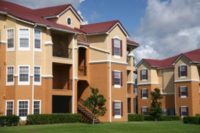Fourth Quarter Indices Show Continued Improvement for Apartment and Condominium Market

The Multifamily Production Index (MPI), released today by the National Association of Home Builders (NAHB), increased two points to a level of 54. It is the fourth straight quarter with a reading over 50.
The MPI measures builder and developer sentiment about current conditions in the apartment and condominium market on a scale of 0 to 100. The index and all of its components are scaled so that any number over 50 indicates that more respondents report conditions are improving than report conditions are getting worse.
The MPI provides a composite measure of three key elements of the multifamily housing market: construction of low-rent units, market-rate rental units and "for-sale" units, or condominiums. In the fourth quarter of 2012, the MPI component tracking builder and developer perceptions of market-rate rental properties dropped four points to 65, but has been above 60 for six consecutive quarters--the longest sustained period of strength since the inception of the index in 2003. For-sale units had its highest reading since the fourth quarter of 2005, increasing two points to 46, while low-rent units increased seven points to 53.
"The apartment and condo markets continue to improve as new household formations generate demand," said W. Dean Henry, CEO of Legacy Partners Residential in Foster City, Calif., and chairman of NAHB's Multifamily Leadership Board. "However, there are certain issues facing builders and developers that may impede their ability to keep up with this demand, such as the rising cost of building materials, labor shortages and the price of land."
The Multifamily Vacancy Index (MVI), which measures the multifamily housing industry's perception of vacancies, dropped two points 31. With the MVI, lower numbers indicate fewer vacancies. After peaking at 70 in the second quarter of 2009, the MVI declined consistently through 2010 and has been at a fairly low level throughout 2011 and 2012.
Historically, the MPI and MVI have performed well as leading indicators of U.S. Census figures for multifamily starts and vacancy rates, providing information on likely movement in the Census figures one to three quarters in advance.
"The MPI continues the improvement that began in the middle of 2010, and the rate of multifamily starts has increased in line with that signal of developer confidence since the end of 2010," said NAHB Chief Economist David Crowe. "Similarly, the falling MVI indicates continued demand for more apartments. For that reason, NAHB expects a 30 percent increase in multifamily starts in 2013."
For data tables on the MPI and MVI, visit www.nahb.org/mms.
Looking for a reprint of this article?
From high-res PDFs to custom plaques, order your copy today!





